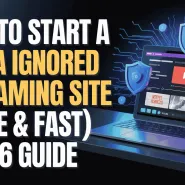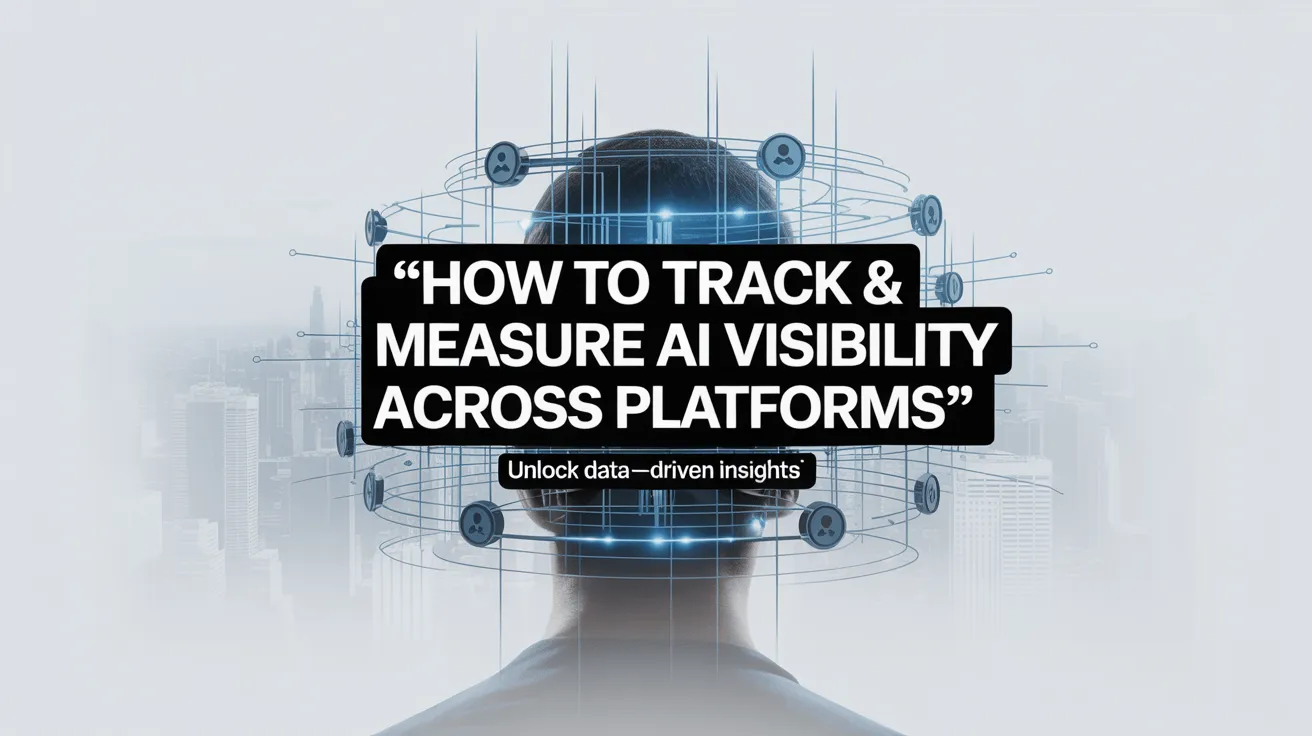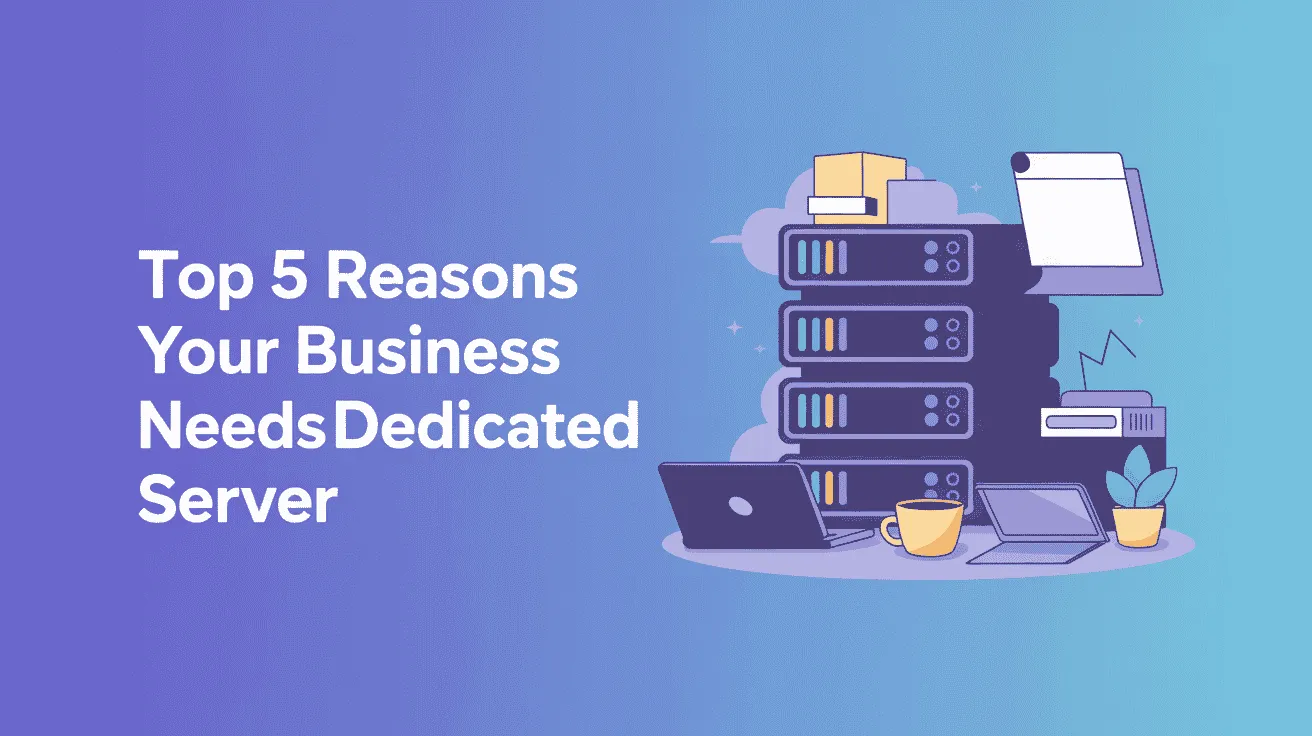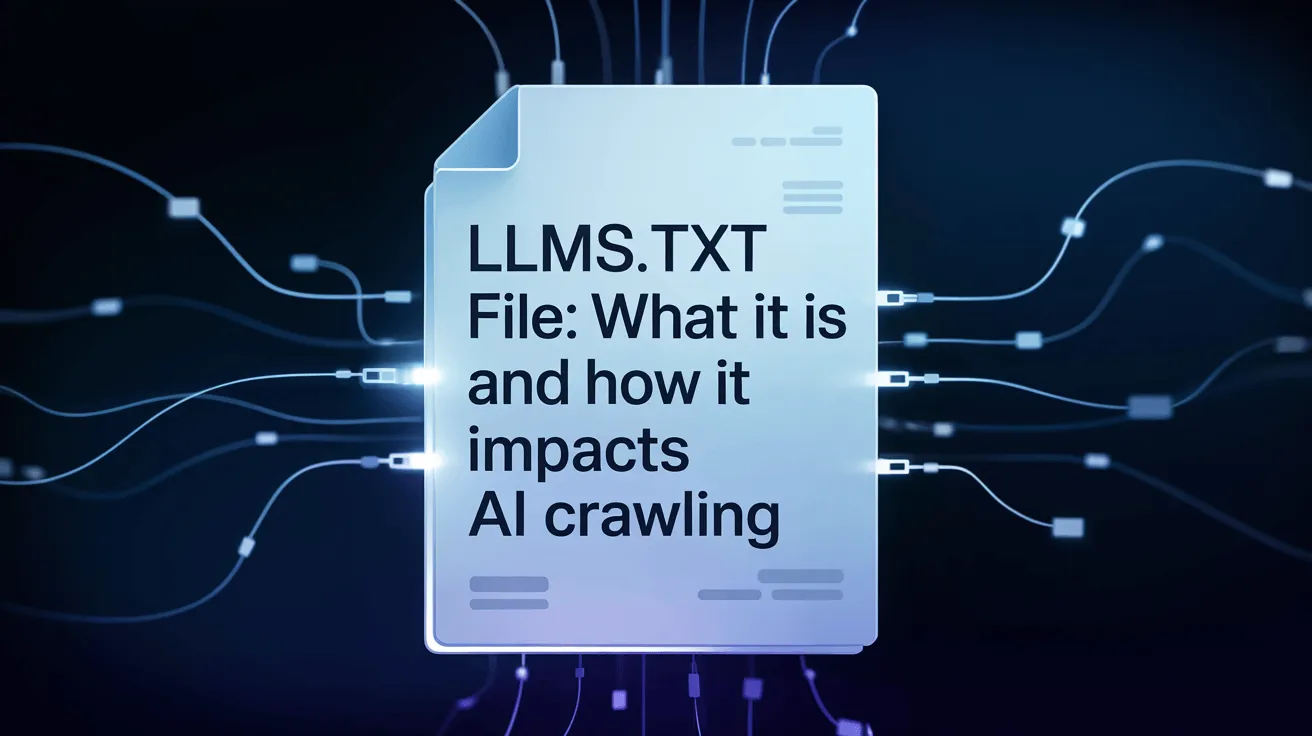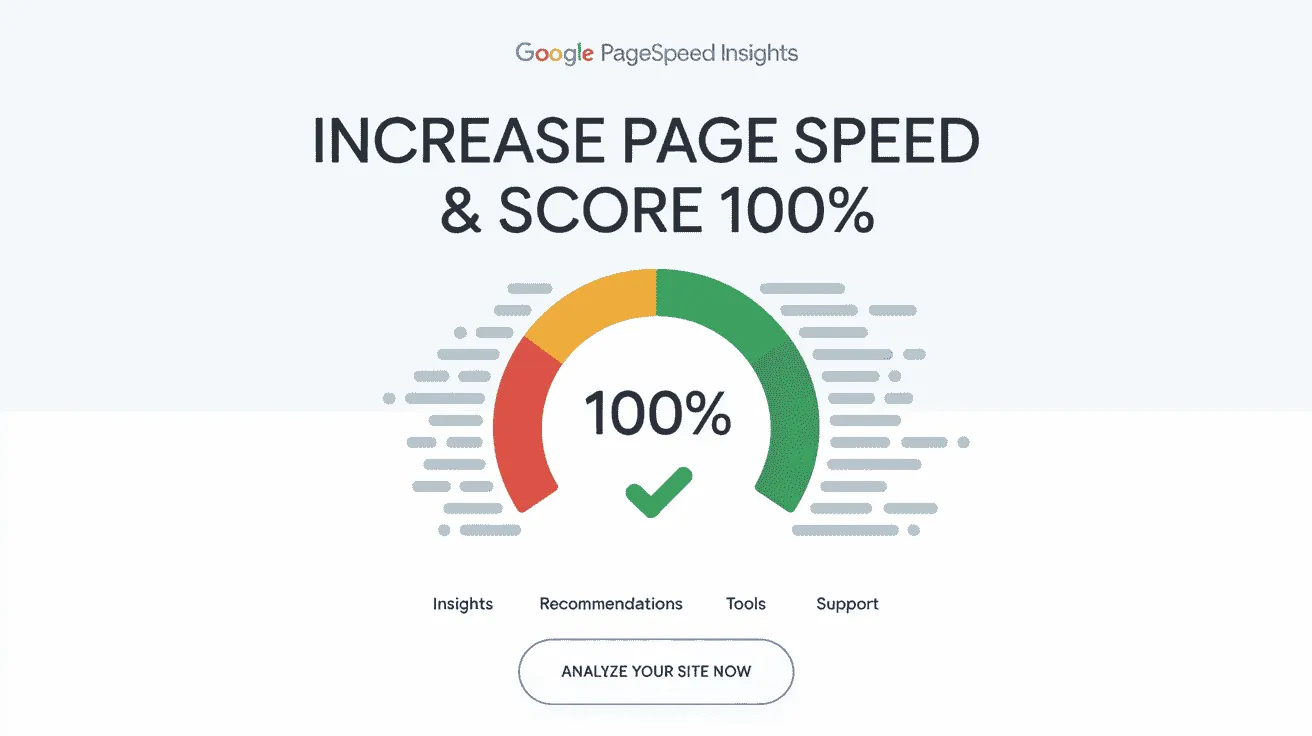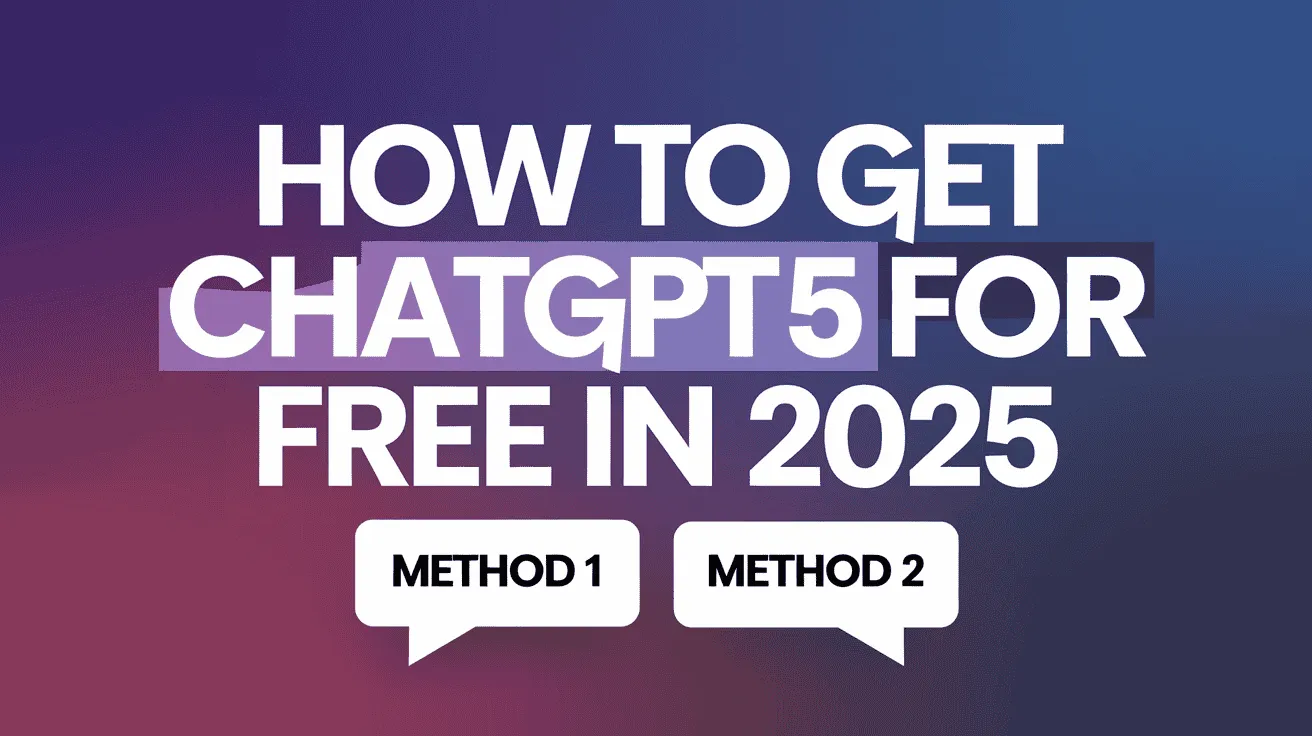Artificial intelligence (AI) continues to shape how businesses grow and connect online. From websites to social media, AI is playing a bigger role than ever. That’s why it’s important for companies to measure AI visibility and track AI visibility to know how their AI efforts are performing across different platforms.
To measure AI visibility means checking how visible and effective your AI tools, content, or features are. When you track AI visibility, you learn where your AI is getting noticed, how people are engaging with it, and what kind of impact it’s making.
In this guide by Owrbit, we’ll walk you through simple ways to measure AI visibility and track AI visibility. You’ll discover useful methods and tools to help you understand how well your business is using AI and how far your reach goes online.
The world of AI is growing fast, and businesses of all sizes need to stay updated. If you don’t measure AI visibility regularly, you could be missing out on opportunities. And if you don’t track AI visibility, you won’t know what to improve. When you do both, you can spot strengths, fix weaknesses, and build a better reputation.
Whether you’re a startup trying to grow or a large company improving your strategy, learning to measure AI visibility and track AI visibility will help you make smarter choices. It’s about knowing what’s working, what needs to change, and how to stay ahead in a fast-moving digital world.
Let’s explore the best practices and strategies to measure AI visibility and track AI visibility in 2025—so you can lead with confidence and clarity.
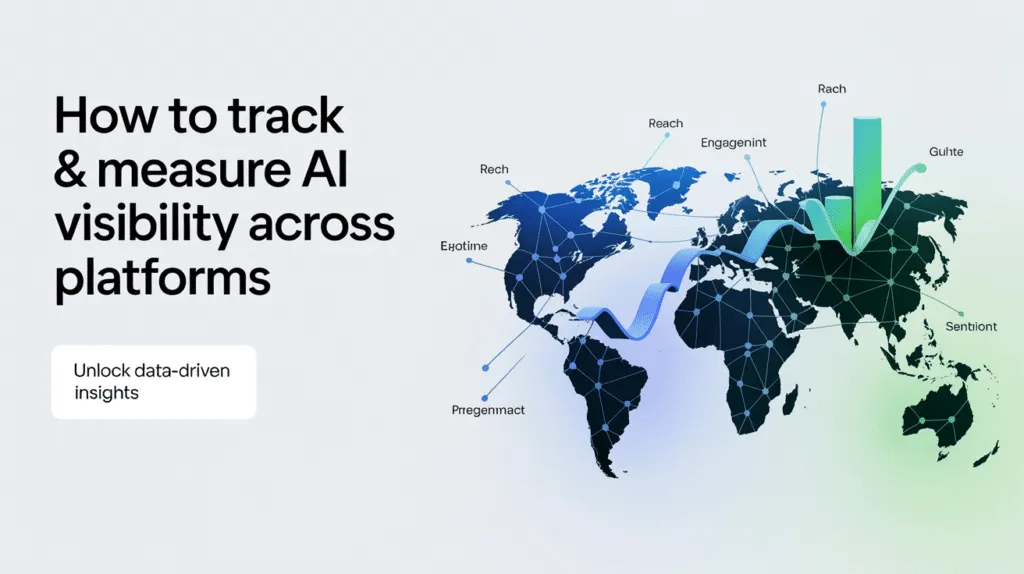
What is AI Visibility?
AI Visibility refers to how clearly and effectively your artificial intelligence (AI) tools, technologies, or content are seen, recognized, and engaged with across digital platforms.
In simple terms, it answers questions like:
- Are people noticing your AI solutions?
- Is your AI brand or product showing up on search engines, social media, websites, or forums?
- Are users interacting with your AI features (like chatbots, recommendations, or automation tools)?
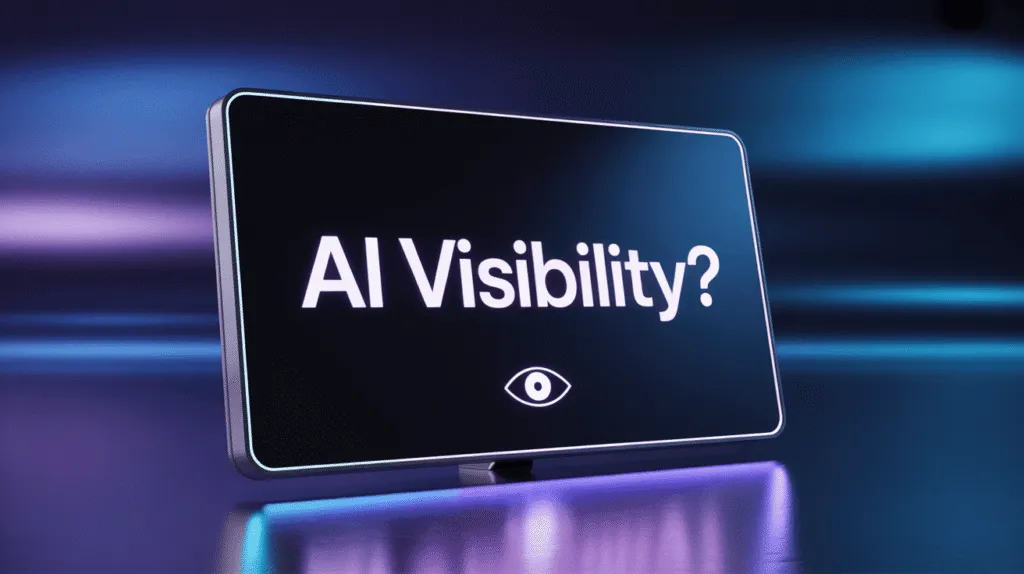
Think of AI visibility as:
- Online presence of your AI-related efforts.
- Market awareness of how well your audience knows and trusts your AI offerings.
- Performance insight into how your AI is helping business goals like user engagement, reach, or conversions.
Examples of AI Visibility:
- Your AI chatbot being mentioned in online reviews or social posts.
- Your AI-powered product ranking on Google search results.
- High engagement on a blog post explaining your AI features.
- Media or influencers talking about your AI innovations.
Why Measuring AI Visibility Matters?
As AI becomes a key part of business, it’s no longer enough just to use it—you need to measure AI visibility to understand how well your efforts are working. When you measure AI visibility, you’re checking how visible, recognized, and effective your AI tools and content are across online platforms.
Here’s why it truly matters:
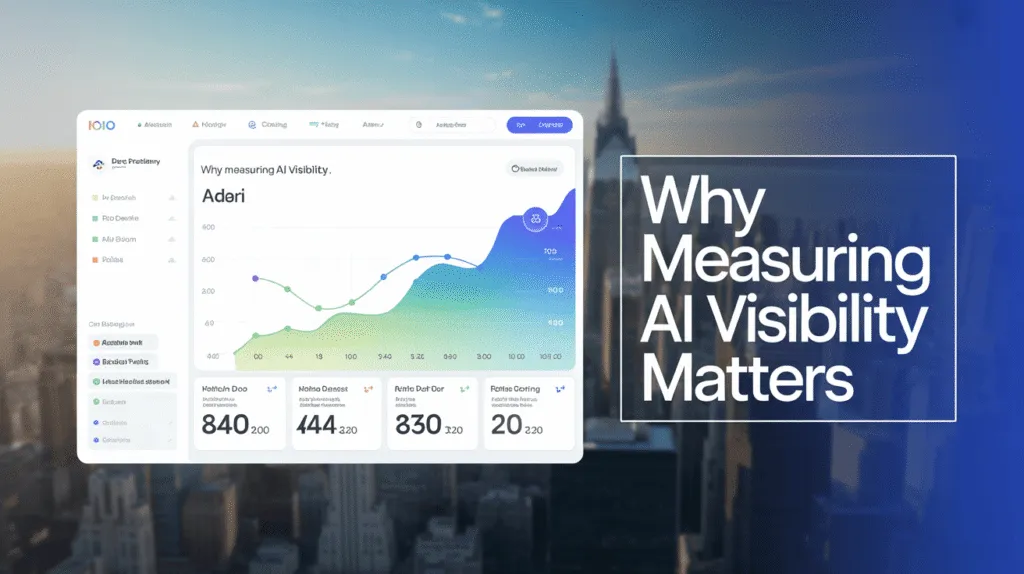
- Understand What’s Working
- Identify which AI tools, content, or features are gaining attention and engagement.
- Helps you focus on strategies that are bringing results.
- Fix What’s Not Working
- Detect underperforming AI efforts early.
- Make necessary improvements to boost performance.
- Stay Ahead of Competitors
- Gain insight into how your AI presence compares with others in your industry.
- Find opportunities to stand out and lead the market.
- Boost Trust and Reputation
- A visible and recognized AI presence builds credibility.
- Helps create a stronger brand image among users and stakeholders.
- Make Smarter Business Decisions
- Use real data instead of assumptions.
- Make informed choices to improve marketing, product development, and AI strategy.
- Increase ROI on AI Investments
- Ensure your AI tools are delivering value.
- Optimize spending and improve the return on your AI-related efforts.
- Improve Online Presence
- Helps your AI content rank better on search engines and reach a wider audience.
- Improves digital visibility across websites, social media, and tech platforms.
- Drive Better User Engagement
- High visibility often leads to higher user interest and interaction.
- Encourages users to explore and trust your AI solutions.
- Track Growth Over Time
- Measuring AI visibility helps you monitor progress.
- See how your AI strategy evolves month to month or year to year.
To grow your brand, connect with your audience, and use AI effectively—you need to measure AI visibility regularly. It’s not just about using AI; it’s about knowing how well it’s working for you.
Key Platforms for AI Visibility Tracker :
As AI becomes a bigger part of digital business in 2025, it’s essential to know where and how your AI efforts are showing up. Tracking AI visibility helps you understand how well your brand, tools, or content are performing across the web. Below are the key platforms that can help you do exactly that:
Checkout How to Get Free Perplexity Pro AI Subscription With Airtel Now!
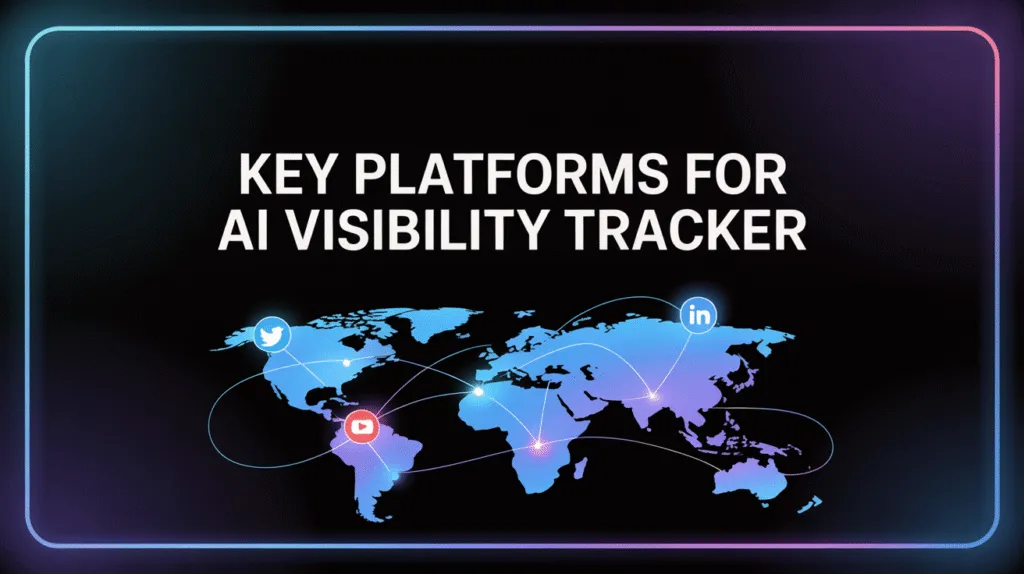
- 1. Google Analytics 4 (GA4)
- Track visits, user behavior, and conversions from AI-driven sources.
- Set up custom events and UTM tags to identify AI traffic.
- 2. Google Search Console & Bing Webmaster Tools
- Monitor how your AI-related pages rank in search results.
- Analyze search performance and indexing related to AI queries.
- 3. Social Media Insights (LinkedIn, Twitter/X, Instagram, YouTube)
- See engagement stats on AI content (likes, shares, reach).
- Track branded mentions, hashtags, and AI campaign performance.
- 4. Mention / Brand24 / Meltwater
- Real-time alerts for when your AI product or brand is mentioned online.
- Helps measure awareness in blogs, articles, forums, and media outlets.
- 5. SEMrush / Ahrefs / Moz
- Track SEO performance for AI-related keywords and content.
- Analyze backlinks from AI tools and referral visibility.
- 6. Perplexity / ChatGPT / Claude Referral Logs
- Detect and analyze visits from AI search engines or chatbots.
- Use server logs or analytics filters to spot AI-based traffic.
- 7. Product Hunt / Futurepedia / AI Directories
- Check visibility of your AI tools on industry-specific listing platforms.
- Track user feedback, traffic spikes, and engagement.
- 8. Reddit / Quora / Hacker News
- Monitor public discussions and visibility of your AI tools or content.
- Track mentions, upvotes, and questions involving your brand.
- 9. Hotjar / Microsoft Clarity
- Track how users interact with AI elements like chatbots or recommendation engines.
- Visual heatmaps show what’s grabbing attention.
- 10. CRM Dashboards (HubSpot, Zoho, Intercom)
- Internally measure AI-driven lead generation and user engagement.
- Useful for tracking post-visit actions and chatbot interactions.
To truly understand the impact of your AI tools in 2025, it’s not enough to just build them—you need to track where they’re seen, how they’re used, and what results they bring. These key platforms offer a powerful starting point to track AI visibility, improve your strategy, and stay competitive in the evolving AI landscape.
Additional Tools and Technologies for Tracking AI Visibility
In addition to the well-known platforms already covered, here are more specialized tools that can help you track AI visibility more effectively in 2025:
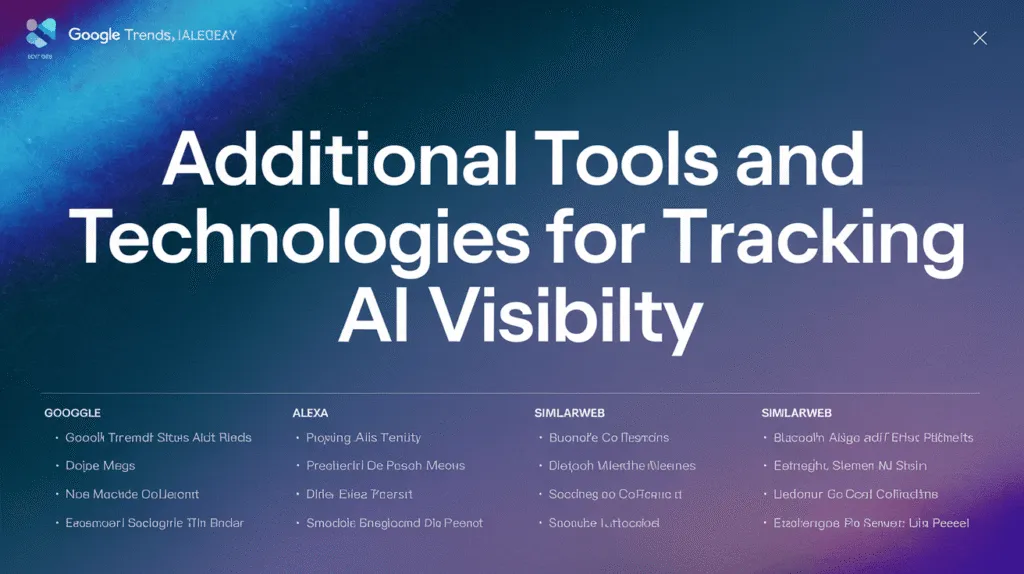
- Plausible Analytics
- A privacy-focused alternative to Google Analytics.
- Offers clean, real-time tracking with custom event setups—useful for tracking AI-based campaigns.
- Matomo
- Self-hosted analytics tool that gives full control over tracking AI-driven user interactions.
- Supports detailed segmentation and AI bot detection via custom tagging.
- Fathom Analytics
- Lightweight analytics platform with easy setup.
- Can be used to track UTM-tagged traffic generated by AI or chatbot referrals.
- Clearbit Reveal
- Identifies companies visiting your site, even if they don’t fill out forms.
- Great for B2B AI tools trying to measure AI visibility by company type or industry.
- Wappalyzer & BuiltWith (Tech Stack Tracking)
- Detect if competitors or websites are using AI tools or scripts.
- Useful for analyzing market trends and visibility of specific AI integrations.
- GPTBot Tracker (Custom Plugin or Script)
- A server-side tool that logs visits from AI bots like ChatGPT’s web crawler (GPTBot).
- Useful for knowing which AI models are accessing or indexing your content.
- UptimeRobot or StatusCake (AI Feature Monitoring)
- Ensure that AI-powered sections (like chatbots, API tools, or automation features) are working and accessible to users and bots.
- Indirectly supports AI visibility by keeping AI tools online.
- OpenAI API Usage Logs / Logs from AI Integrations
- Track how often your content or tools are accessed by AI via API.
- Useful if your business builds on AI platforms like OpenAI, Cohere, or Anthropic.
- Google Looker Studio (Data Visualization)
- Connects multiple sources like GA4, Search Console, and others to visualize AI visibility metrics in one dashboard.
- Ideal for reporting trends, user flows, and AI-driven conversion funnels.
- Firebase (for App-Based AI Tools)
- For apps using AI, Firebase tracks user activity, engagement, and referrals driven by AI-powered features.
- Includes event tracking and custom attribution for AI-triggered actions.
These tools—when combined with your existing tracking setup—give you deeper control, more accurate measurement, and a full view of how AI is contributing to visibility, engagement, and growth across digital channels.
Metrics to Consider When Measuring AI Visibility
To effectively measure AI visibility, it’s important to focus on specific metrics that reveal how well your AI tools, content, or features are performing across platforms. These metrics help you understand your AI’s reach, recognition, user interaction, and overall impact.
Below are the key metrics to consider when measuring AI visibility:

- 1. AI Referral Traffic
- Number of visitors coming from AI tools like ChatGPT, Perplexity, Claude, or Bard.
Identified through user-agent logs, referral sources, or custom UTM parameters.
- Number of visitors coming from AI tools like ChatGPT, Perplexity, Claude, or Bard.
- 2. Mentions Across Platforms
- How often your AI brand, tool, or content is mentioned on websites, forums, and social media.
- Tracked via media monitoring tools or search alerts.
- 3. Backlinks from AI-Summarized Content
- Number and quality of backlinks created by AI tools linking to your content.
- Indicates how often your content is being picked up and referenced by AI models.
- 4. Search Engine Impressions for AI-Related Queries
- Tracks how often your AI content appears in search results for relevant keywords.
- Monitored via Google Search Console or SEO tools.
- 5. Engagement Metrics
- Includes click-through rate (CTR), time on page, scroll depth, and bounce rate.
- Helps evaluate if users interacting through AI-generated traffic are truly engaged.
- 6. Conversion Rate from AI Sources
- Measures sign-ups, purchases, or other goal completions that originated from AI-driven referrals or AI-based tools like chatbots.
- 7. Social Media AI Content Performance
- Tracks likes, shares, comments, and reach for AI-related posts.
- Includes hashtag tracking and audience growth.
- 8. Visibility in AI Directories
- Measures views, upvotes, and listing performance on platforms like Product Hunt or Futurepedia.
- Reflects how well your AI product is doing in focused marketplaces.
- 9. User Agent/AI Bot Access Logs
- Detects how frequently AI crawlers (e.g., GPTBot, Google-Extended) visit your site.
- Indicates whether your content is being read, indexed, or used by AI platforms.
- 10. Brand Sentiment Analysis
- Measures public opinion of your AI solution based on tone and sentiment.
- Useful for knowing how people feel about your AI presence online.
Tracking AI visibility isn’t just about numbers—it’s about understanding how AI-driven exposure is helping your brand grow. By focusing on these specific metrics, you’ll be better equipped to analyze performance, improve visibility, and shape a smarter AI strategy in 2025.
How to Set Up Tracking for AI Visibility :
To get the most out of your AI tools and content, it’s essential to know who’s seeing them, how they’re being used, and where they’re getting attention. Setting up tracking for AI visibility helps you understand exactly that—by capturing data from platforms, AI bots, search engines, and user interactions.
Follow these steps to properly set up AI visibility tracking:
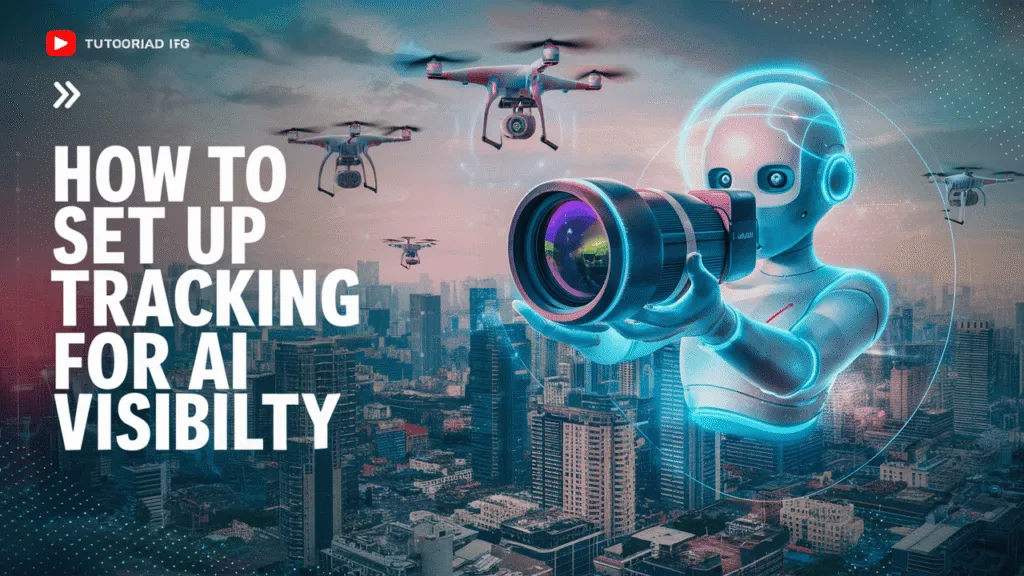
- ✅ Step 1: Define What You Want to Track
- Decide which AI-related items you want to monitor. For example:
- Visits from AI bots (ChatGPT, Bard, Perplexity)
- AI-generated traffic (from summaries or tools)
- Mentions on social media or forums
- Usage of AI features (chatbots, recommendation engines)
- Decide which AI-related items you want to monitor. For example:
- ✅ Step 2: Set Up Google Analytics 4 (GA4)
- Add UTM Parameters to any links coming from AI tools or chatbots. Example: utm_source=chatgpt&utm_medium=ai_referral
- Create Custom Events to track clicks or conversions triggered by AI-driven actions.
- Use Source/Medium Reports to identify and label AI-related visits.
- ✅ Step 3: Track AI Bots via User Agent Logs
- On your server, log access from bots like GPTBot, ClaudeBot, Google-Extended, etc.
- Use tools like Cloudflare, NGINX logs, or Apache logs to monitor traffic by user agent.
- Store these logs to track trends over time (daily, weekly, monthly visits from AI bots).
- ✅ Step 4: Monitor AI Mentions & Visibility
- Use Mention, Brand24, or Meltwater to track where your AI brand or content is being talked about.
- Set alerts for keywords like your brand + “AI”, your product name, or chatbot references.
- ✅ Step 5: Use SEO Tools for AI-Sourced Backlinks
- Tools like SEMrush, Ahrefs, or Moz help detect backlinks created when AI tools summarize your content.
- Monitor keywords that AI tools use to pull your content into answers.
- ✅ Step 6: Build a Dashboard (Looker Studio, Tableau, or Power BI)
- Combine data from:
- GA4 (traffic, behavior, events)
- Server logs (AI bot visits)
- Brand monitoring tools (mentions)
- SEO platforms (visibility and backlinks)
- Give users or teams a visual view of AI visibility metrics in real time.
- Combine data from:
- ✅ Step 7: Track Interactions with AI Features
- If your website uses AI (e.g., chatbots, smart filters), set up event tracking or custom goals.
- Example: “AI chatbot form submission” or “AI recommendation clicked”
- If your website uses AI (e.g., chatbots, smart filters), set up event tracking or custom goals.
- ✅ Step 8: Add AI Visibility Filters for Users
- If you offer a dashboard or analytics panel to users, add a filter for:
- “AI Traffic”
- “Mentions from AI Tools”
- “Visits from AI Bots”
- If you offer a dashboard or analytics panel to users, add a filter for:
Setting up AI visibility tracking isn’t just a technical task—it’s a strategic move. It helps you measure impact, uncover new opportunities, and improve your AI performance. With the right setup, you’ll gain full visibility into how AI is affecting your brand, content, and user behavior.
How AI Algorithms Affect Visibility Across Platforms
AI algorithms decide what content gets shown, ranked, or hidden on every major platform. Here’s how they influence visibility across different channels:
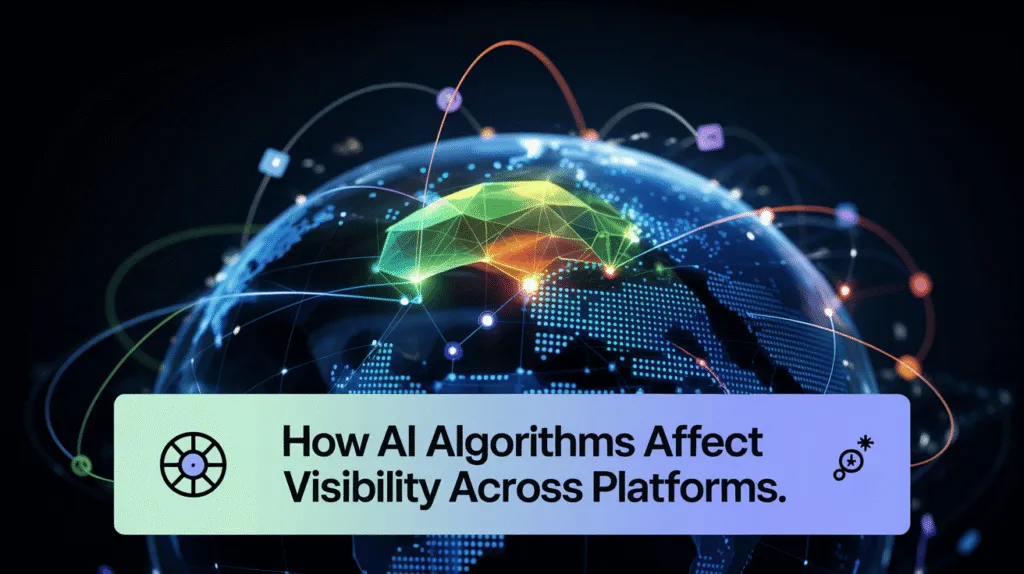
- Search Engines (Google, Bing, Perplexity, ChatGPT)
- AI favors content that is relevant, structured, and trustworthy.
- Summaries, featured snippets, and AI responses depend on semantic understanding.
- Content with clean metadata and clear answers ranks higher in AI-generated results.
- Social Media Platforms (Instagram, LinkedIn, Twitter/X, TikTok)
- AI boosts content with higher engagement (likes, shares, comments).
- Visuals, timing, and relevance to user interests influence reach.
- AI reads patterns to recommend content to users most likely to engage.
- Video & Content Platforms (YouTube, Reels, Shorts)
- AI tracks watch time, click-through rate (CTR), and retention.
- Thumbnails and titles strongly impact visibility.
- Consistent content quality improves AI-driven recommendations.
- AI Tools & Chatbots (ChatGPT, Gemini, Claude)
- Content visibility depends on clarity, authority, and structure.
- AI selects reliable, well-linked content to reference or summarize.
- FAQs, clean HTML, and simple answers are more likely to appear in AI outputs.
- Marketplaces & Directories (Product Hunt, App Stores, AI Tool Listings)
- AI ranking depends on user reviews, relevance, and listing quality.
- More positive feedback and keyword-rich descriptions lead to better placement.
- Active user engagement boosts visibility.
- Email & CRM Tools (Gmail, Outlook, HubSpot)
- AI filters decide if emails land in inboxes or spam folders.
- Personalization, relevance, and sender reputation impact visibility.
- AI prioritizes emails with clear subjects and strong engagement history.
- Advertising Platforms (Meta Ads, Google Ads, LinkedIn Ads)
- AI determines ad delivery based on audience behavior and content performance.
- High CTR, relevant targeting, and good ad quality improve visibility.
- Poorly performing ads are deprioritized by the algorithm.
To improve visibility in today’s digital world, your content needs to appeal to both people and AI algorithms. Understanding how these systems rank, filter, and recommend content is essential for making sure your AI efforts reach the right audience.
Conclusion: Future-Proofing Your AI Visibility Strategy
As AI continues to evolve and integrate deeper into digital platforms, businesses must adapt to stay visible, relevant, and competitive. The ability to consistently measure AI visibility and track AI visibility will be one of the most important factors for long-term success.
By building a strategy that includes tracking AI-generated traffic, monitoring mentions across platforms, and understanding how algorithms shape exposure, companies can better understand their strengths and weaknesses. When you regularly measure AI visibility, you gain data-driven insights that guide smarter decisions. And when you actively track AI visibility, you stay alert to new opportunities, trends, and audience behaviors.
Future-proofing your AI visibility strategy means combining the right tools, consistent tracking methods, and a flexible mindset. Whether you’re optimizing for AI search engines, chatbots, or recommendation systems, your visibility depends on how well you adapt to AI’s growing role in digital ecosystems.
In the years ahead, those who consistently track AI visibility and measure AI visibility will have a clear advantage—because they’ll know what’s working, where to improve, and how to lead in an AI-driven world.
Checkout How to Get Free Perplexity Pro AI Subscription With Airtel Now!
Discover more from Owrbit
Subscribe to get the latest posts sent to your email.
